
The AI readiness report: What’s holding back adoption
Reading time: about 5 min
Topics:
Key takeaways
-
61% of knowledge workers believe their organization’s AI strategy is only somewhat to not at all well-aligned with operational capabilities.
-
Only 45% of knowledge workers say their company has established AI ethics guidelines.
-
39% of organizations have implemented AI agents but only 26% rate them as “completely successful.”
-
To implement AI successfully, organizations need to have more structure around processes, documentation, and collaboration.
-
Having operations that are ready for AI is a new competitive edge.
Many organizations are implementing AI tools across their teams expecting significant efficiency and productivity gains, but their underlying operations—such as documentation, processes, and collaboration practices—are often not ready to support those outcomes at scale.
Lucid conducted a survey of ~2,200 knowledge workers to better understand what teams need to do to truly capture the value of emerging AI capabilities they’ve invested in.
AI adoption is gaining momentum
The data shows that there’s clear momentum behind AI adoption. Most knowledge workers already use AI, with 72% of respondents saying they currently use AI-powered tools for collaboration, and the most commonly used tools are:
-
Generative AI (cited by 81% of respondents)
-
AI-powered communication platforms (51%)
-
AI for document collaboration (49%)
The top desired outcomes driving that AI adoption are:
-
Improved productivity (74%)
-
Cost reduction (51%)
-
Enhanced communication (48%)
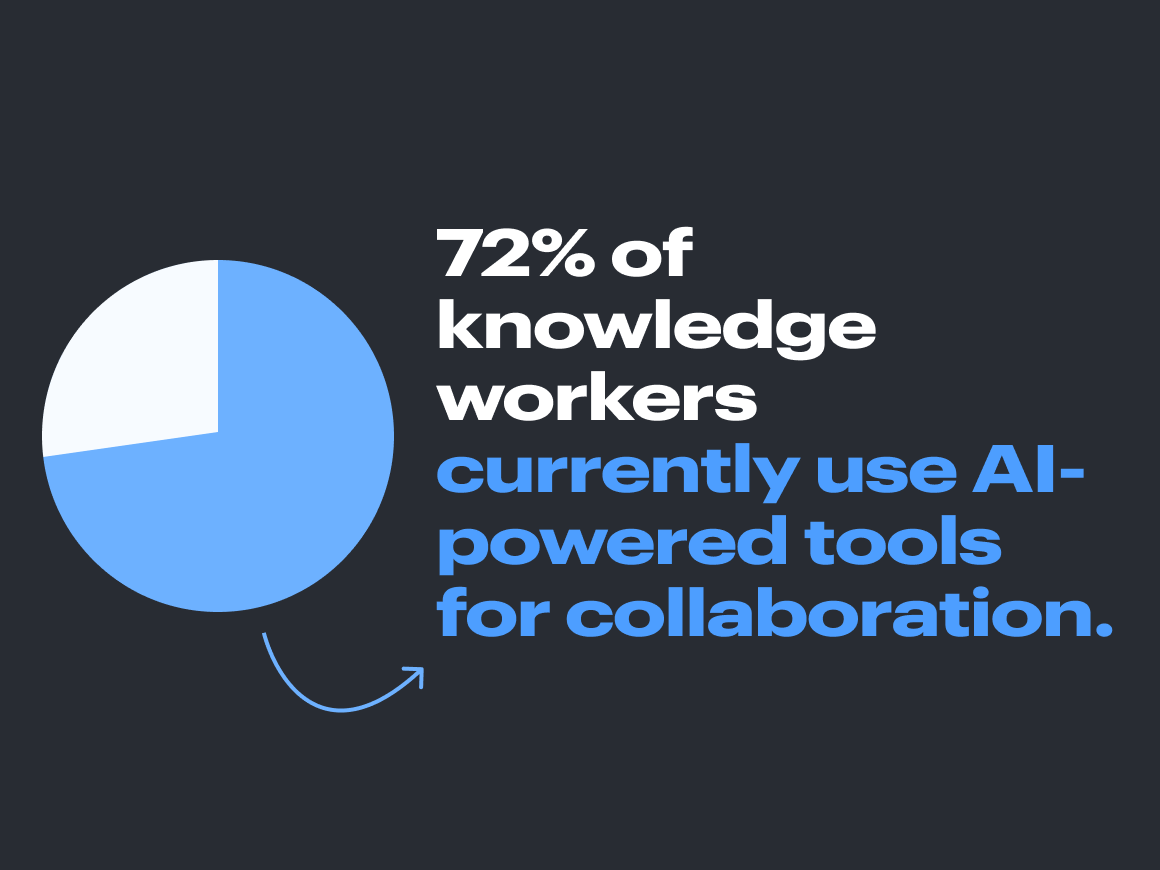
But having the tools and intention is not the same as having the infrastructure, workflows, or practices needed to unlock AI’s full value. Let’s dive into the findings to better understand the challenges, gaps, and opportunities of AI implementation.
Top challenge: Operations are in the way of AI’s potential
While AI adoption is on the rise, the survey largely found that organizations aren’t currently structured to support agentic AI due to a lack of process documentation (only 16% of respondents say their workflows are extremely well-documented) and misalignment between AI strategy and operational capabilities.
-
49% of respondents cite undocumented or ad-hoc processes impacting efficiency sometimes; 22% say this happens often or always.
-
61% believe their organization’s AI strategy is only somewhat to not at all well-aligned with operational capabilities.
-
46% say their organization has only integrated AI into "some" or "almost no" workflows.
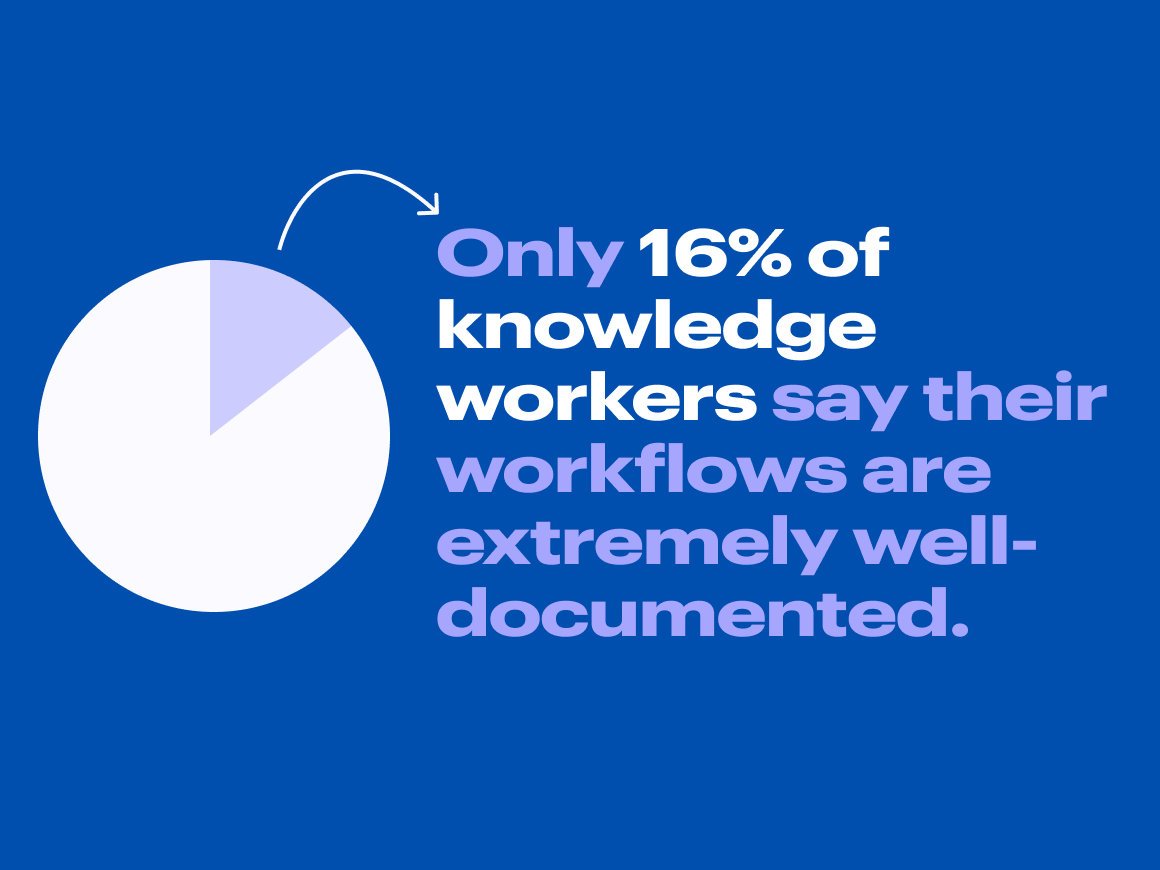
Going along with a lack of documentation, the survey also revealed that institutional knowledge dominates day-to-day work, with only 4% saying that none of their team’s workflows rely on person-dependent knowledge.
-
46% of respondents say operations is the most dependent on informal or person-dependent knowledge, followed by customer support (36%) and HR (29%).
-
46% say employees "sometimes" rely on tribal or institutional knowledge; 31% say "often" or "always."
This data shows a gap not just in tooling but in the maturity of processes, workflows, and systems. AI tools can’t be used to their fullest potential in unstructured environments. AI agents can’t access institutional knowledge—and without codification of processes, businesses risk scaling inefficiency, not intelligence. The biggest barriers to documenting knowledge at scale are:
-
Lack of time (cited by 41% of respondents)
-
Lack of tools (30%)
-
No clear ownership (27%)
Additionally, only 26% of knowledge workers described their organization’s current AI efforts as “mature” as opposed to “visionary”—a small number considering the number of organizations that have adopted AI. 38% admit that AI adoption in their organization is “strategic but early,” and 21% say it’s “mostly hype with limited progress.” That means that over half of organizations are not successfully implementing AI.
Hidden blockers: Collaboration and change management
Another finding? Collaboration and change management are also often bottlenecks to fully taking advantage of AI. 23% of respondents say collaboration is often or always the bottleneck in complex work. 42% of respondents are somewhat concerned about misusing AI due to unclear guidelines, and 27% are very or extremely concerned. Only 45% of respondents say their company has established AI ethics guidelines.
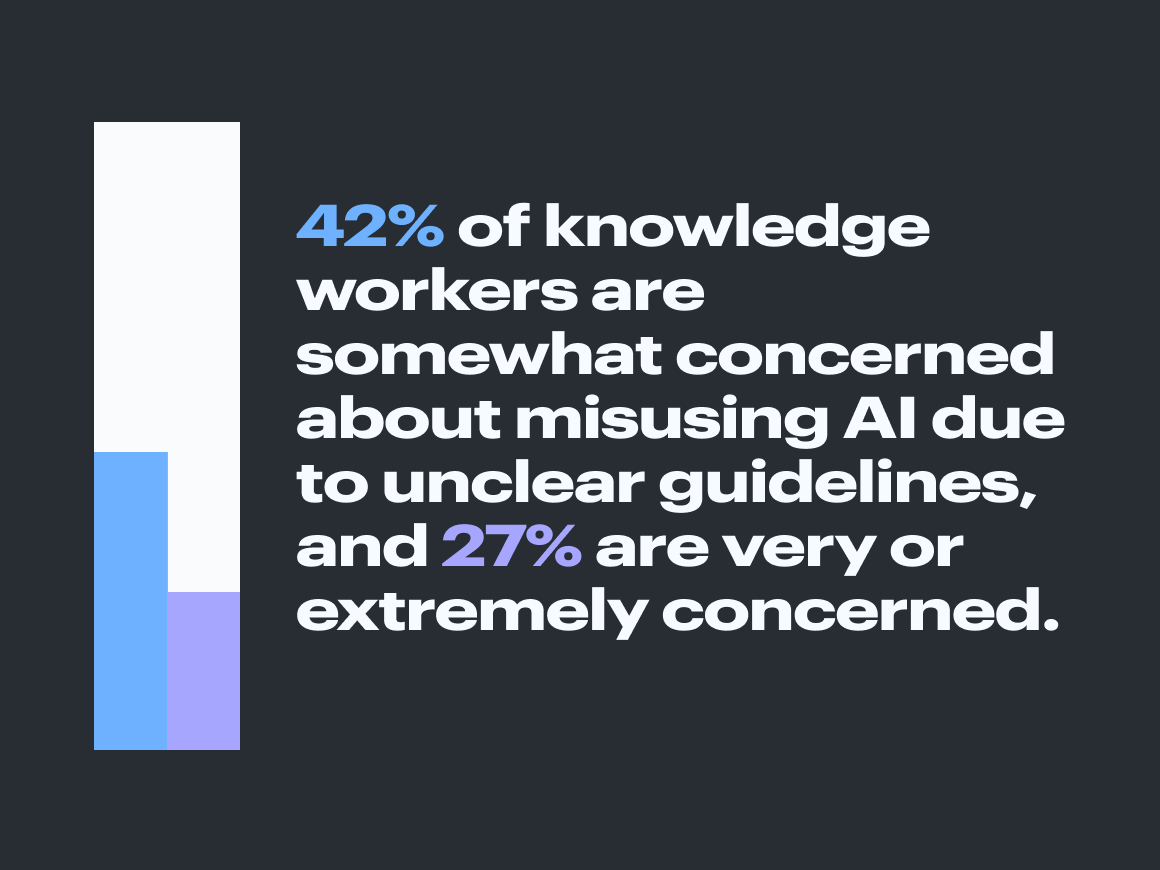
Top tools that would help teams adapt to AI:
-
Process documentation (cited by 34% of respondents)
-
Visual workflows (33%)
How a company approaches AI is also perceived differently depending on an employee’s role. While most agree their company’s approach is “well-considered,” C-suite executives are far more likely to see it this way (61%) than managers (49%) or entry-level employees (36%).
The bottom line is that teams want to embrace change, but friction around collaboration and lack of formal guidance adds risk and reduces impact.
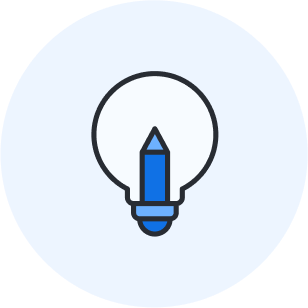
Looking to improve process documentation and make workflows visual for your teams? Lucid can help with both!
Learn moreExecution gaps: Unsuccessful AI implementation
39% of organizations have implemented AI agents but only 26% rate them as “completely successful.” Even organizations taking action are struggling to deliver measurable success—often because of weak foundations and inconsistent implementation.
The top reasons for implementation failure are:
-
Cultural resistance (cited by 27% of respondents)
-
Lack of clearly defined parameters (26%)
-
Lack of transparency around processes and best practices (25%)
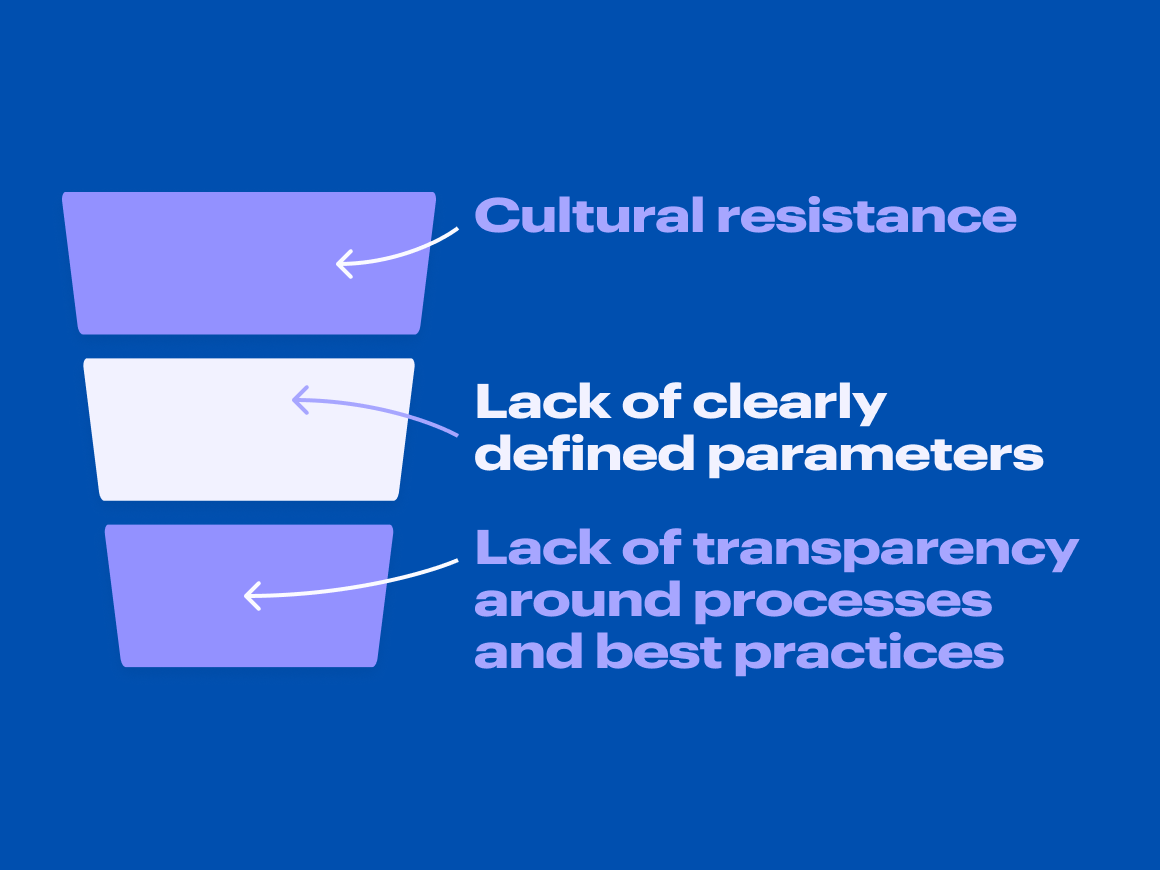
Only 34% of organizations say their AI projects have returned a positive ROI for "most" or "all" initiatives.
The opportunity: Operational readiness is the new competitive edge
While there are several challenges to AI implementation, there is also a lot of opportunity for organizations to pull ahead of competitors and enhance their efficiency. An organization that has operational readiness is an organization poised for successful AI implementation.
When asked which gaps must be closed to succeed with AI, the top responses were:
-
Data quality (cited by 30% of respondents)
-
Collaboration (20%)
-
Alignment on strategy (19%)
-
Documentation (15%)
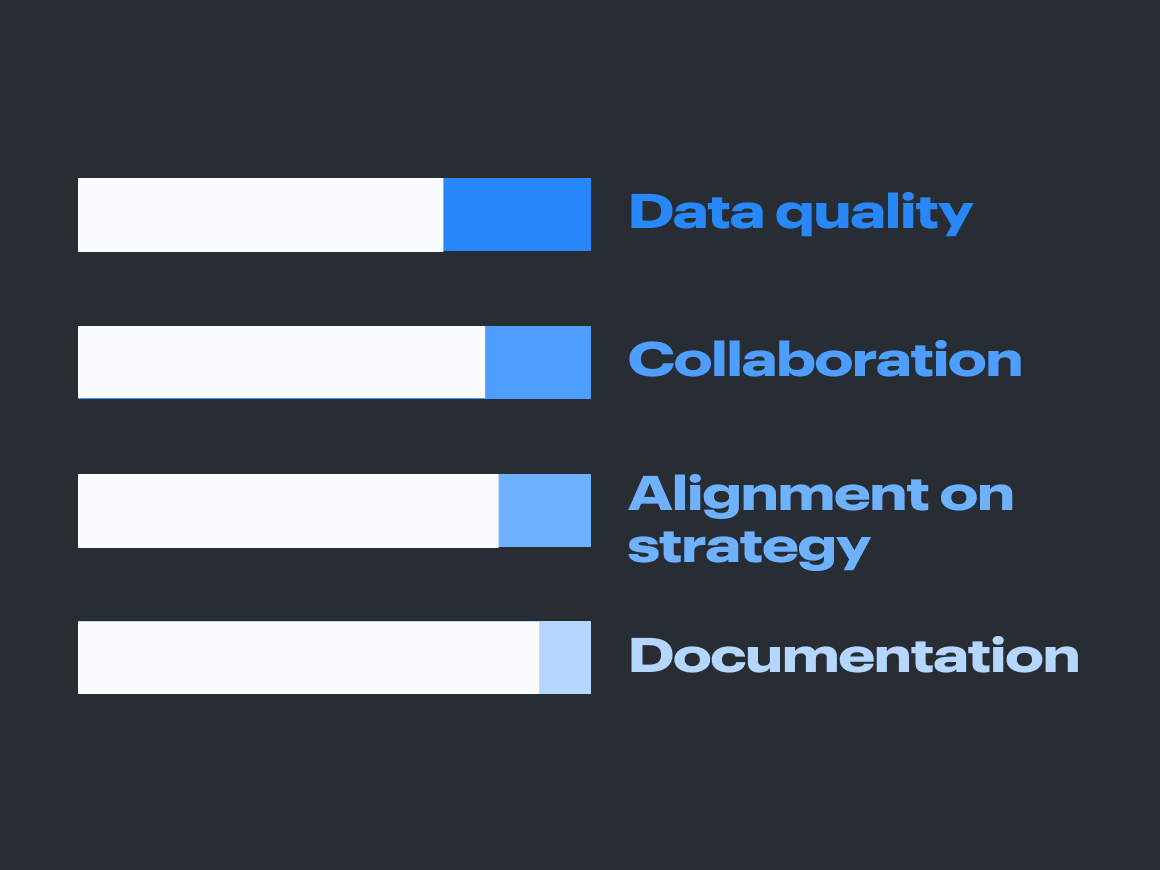
The top needs to help teams adapt are:
-
Document collaboration (cited by 37% of respondents)
-
Process documentation (34%)
-
Visual workflows (33%)
-
AI agent behavior guides (19%)
-
Role mapping (16%)
Teams don’t just need tools—they need structure, visibility, and repeatable practices to adopt AI effectively. Luckily, there are ways your organization can start adopting these traits now to get ready for implementing AI, and Lucid can help!
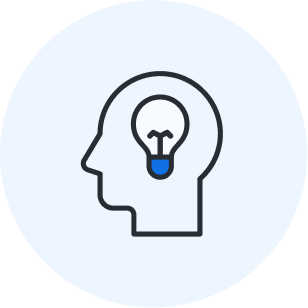
Learn what steps you can take to become AI-ready and how Lucid can help at every stage of AI transformation.
Read moreAbout Lucid
Lucid Software is the leader in visual collaboration and work acceleration, helping teams see and build the future by turning ideas into reality. Its products include the Lucid Visual Collaboration Suite (Lucidchart and Lucidspark) and airfocus. The Lucid Visual Collaboration Suite, combined with powerful accelerators for business agility, cloud, and process transformation, empowers organizations to streamline work, foster alignment, and drive business transformation at scale. airfocus, an AI-powered product management and roadmapping platform, extends these capabilities by helping teams prioritize work, define product strategy, and align execution with business goals. The most used work acceleration platform by the Fortune 500, Lucid's solutions are trusted by more than 100 million users across enterprises worldwide, including Google, GE, and NBC Universal. Lucid partners with leaders such as Google, Atlassian, and Microsoft, and has received numerous awards for its products, growth, and workplace culture.
Related articles
The top AI adoption challenges (+ solutions) in the workplace
Get expert tips for overcoming three of the greatest AI adoption challenges workers face today.
A quick guide to Lucid’s AI features
Start implementing AI into your workflow in a way that works for you with these Lucid AI features.
5 organizational change management strategies for a modern workforce
Organizational change management is complex. Learn from Lucid’s experts on how to pull off a company-wide shift.
Closing the AI transformation gap: How to prepare your business for agentic AI
Uncover the greatest challenges in AI transformation and learn what steps you can take today to get your business ready for agentic AI.
